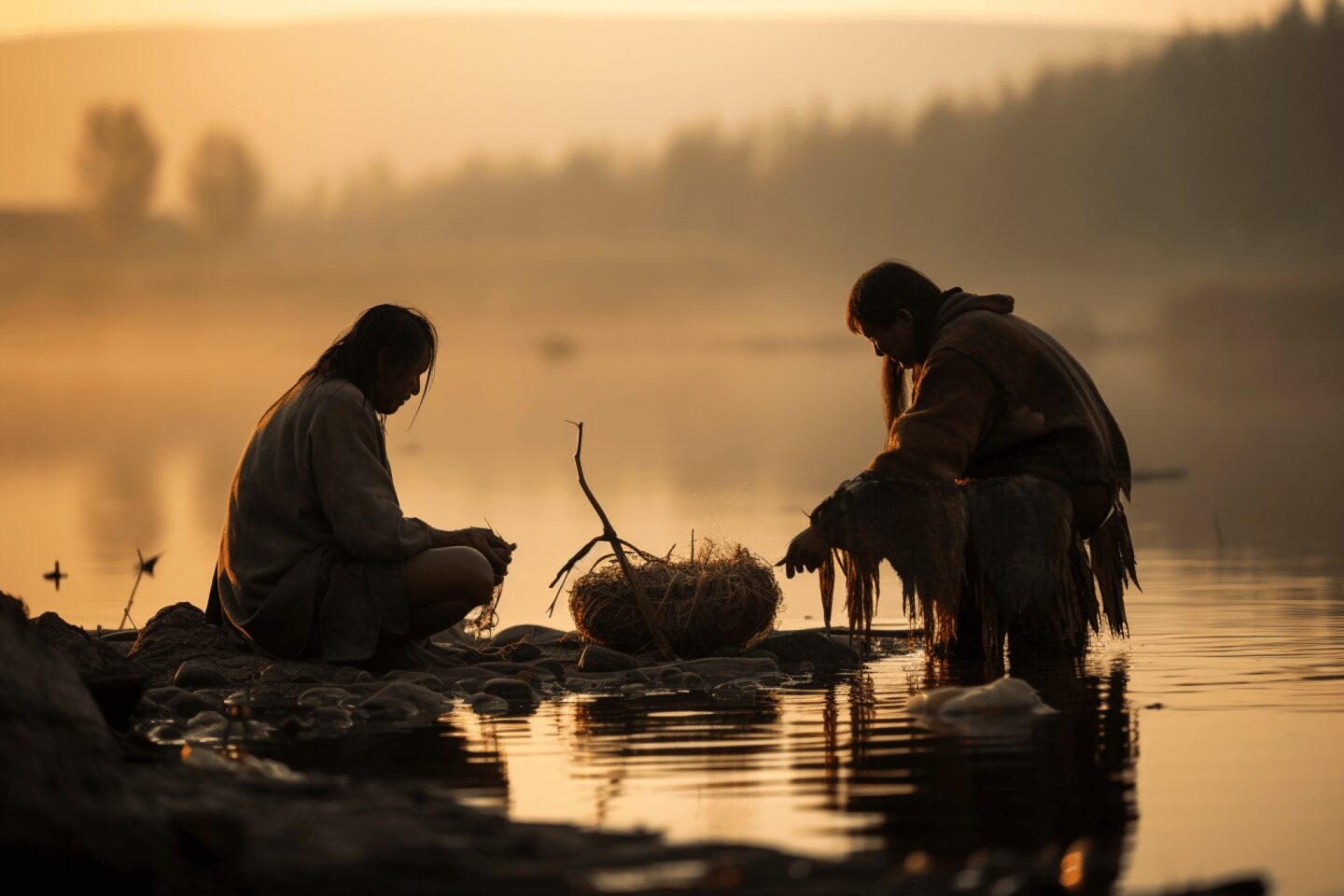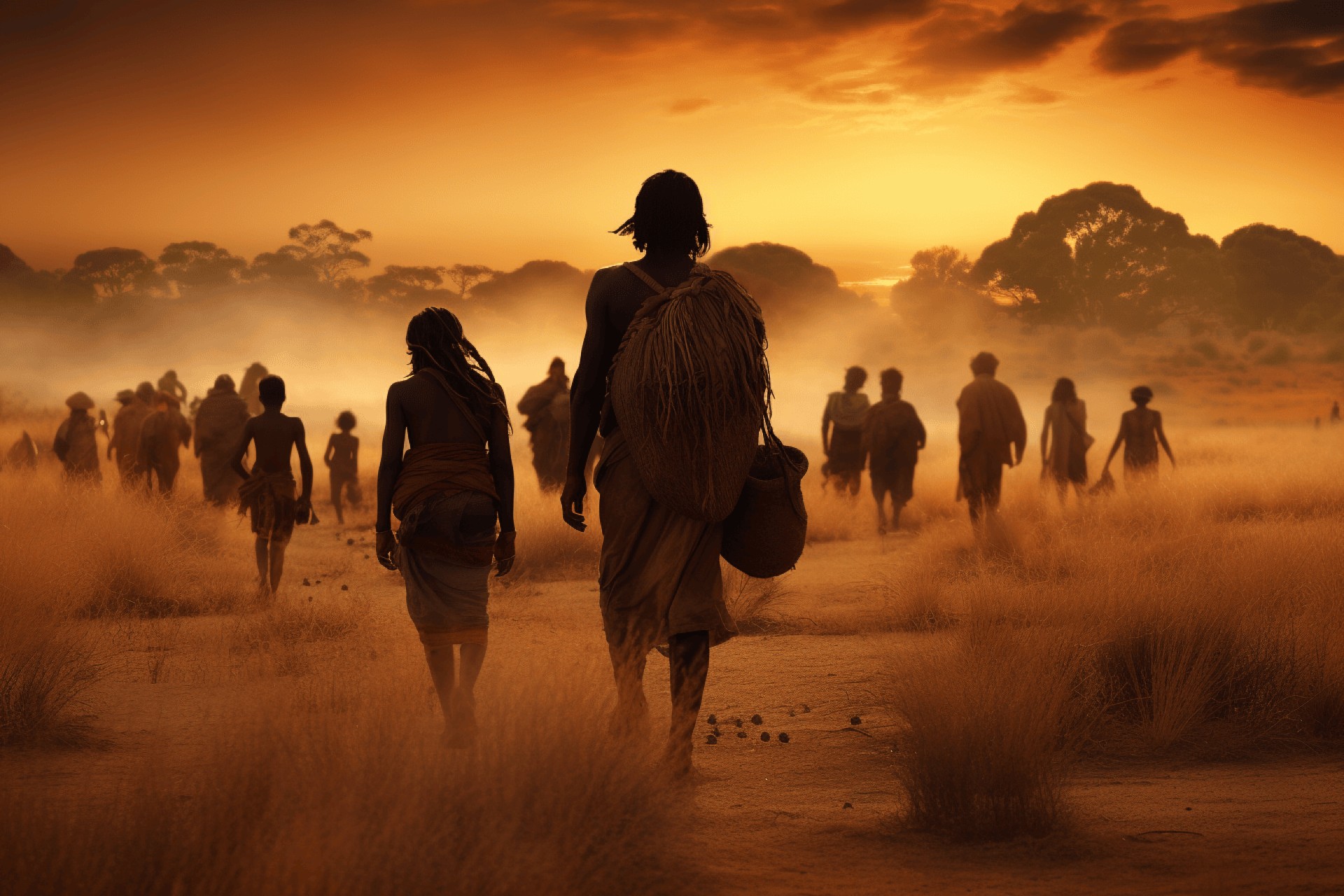How climate change destroys indigenous languages: three unique languages on the brink of extinction
Very unfairly, climate change first affects the areas that contribute to it the least. Indigenous tribes from all over the world have an almost non-existent ecological footprint due to their reliance on hunting and gathering. Yet, they are forced to abandon their ancestral lands due to the rapid decline of the climate.
Climate migrants will find themselves in communities where their native languages are not spoken or valued, which leads to the decline or even loss of indigenous languages. In this article, we take you on a journey to three unique places in the world where indigenous languages are endangered due to climate change.
Selkups see traditional vocabulary disappear
The impact of climate change is felt by the Selkup people, who reside between the rivers Ob and Yenisey in Siberia. Belonging to the larger Finno-Ugric language family, Selkup is the only surviving language of the South Samoyedic branch. It is estimated that Selkup is spoken by only 600 people; having undergone russification, it is already a severely endangered language, however, climate change is accelerating its decline even more.
Selkup has several dialects, one of which – Taz – features a striking 25 vowel phonemes. Until the early twentieth century, Selkup served as a lingua franca in West Siberia, spoken extensively by different tribes in the region. Today, it is spoken mostly by older Selkups and is almost entirely absent from young people’s everyday speech.
Selkup features 13 cases, making it comparable with European Finno-Ugric languages such as Finnish, Estonian and Hungarian. Similarly to Finnish and Estonian, the numbers ‘eight’ and ‘nine’ are formed through subtraction, shedtyatgvet meaning ‘eight’ (two lacking ten) and okkyrtyatgvet meaning ‘nine’ (one lacking ten).
Polina Shulbayeva, a Selkup and coordinator of indigenous peoples in Russia, says that Selkup people have traditionally relied on fishing and game hunting. As a result of ongoing climate change, these activities are deprived of a crucial element – ice.
Without ice, the migration paths of wild animals are unpredictable, leaving Selkup hunters without their traditional food. The lack of ice also makes it nearly impossible to catch fish during the winter. Climate-induced diet change negatively affects the health of the Selkup people.

On account of eradicating traditional ways of living, climate change also has a detrimental impact on the language. When a customary practice or food disappears, so does the corresponding word. Consequently, a substantial amount of vocabulary linked to fishing and hunting will be lost.
Speakers of Chakali experience rapid language assimilation
Climate change does not only affect languages in the Arctic circle, it also wreaks havoc in countries close to the equator, such as Ghana. The northern regions of Ghana face severe climate-related challenges including higher temperatures, declining rainfall levels and wildfires. As the country is heavily reliant on agriculture, it is becoming more and more difficult for the tribes in the north to access nutritious food.
Every year, climate change forces a great number of Ghanaians from northern tribes to relocate to southern urban centres. Due to the dominance of larger linguistic groups in the cities, speakers of minority languages quickly adapt to speaking the local language, thus accelerating the loss of their native languages. One such language is Chakali.
Chakali is a minority language spoken in the Upper West Region of Ghana. It is reported to have around 6000 speakers. However, the language is facing a rapid decline due to migration and a decreasing number of young speakers. As a result, it is now categorised as highly endangered.
Chakali does not have a writing system and has mainly been used for oral communication. Nevertheless, the disappearance of Chakali would represent a great loss in the diversity of global languages. The language is densely intertwined with the belief systems of the community. This is evident in the intricate yet captivating conversational taboos.
For instance, Chakali speakers avoid naming certain animals and phenomena in order to avoid attracting their attention. Instead, descriptive euphemisms are used – elephant (bɔ̀là) would be a ‘big-arm-owner’ (néŋ-tɪɪ̄n̄ā) and night (tébíŋ̀) would be ‘ruined place’ (bárà-tʃɔ́gɔ́ʊ́). In addition, Chakali speakers consider it to be forbidden to sweep the floor or even utter the word ‘broom’ (tʃãã) while someone is eating.
In addition, Chakali features a palatal click sound pronounced with a closed mouth, which is absent from most languages in the world. One click is most commonly used as an affirmative and two clicks as a negative answer.
Young Ahamb speakers must cope in a novel language environment
The world’s largest density of unique languages can be found in the tiny island nation of Vanuatu, located in the southern Pacific Ocean. Within 12,189 square kilometers, a remarkable 110 languages are spoken. This results in an average of one language per every 111 square kilometers.
Unfortunately, according to the World Risk Index in 2016, Vanuatu is also the country that holds the highest vulnerability ranking concerning natural disasters.

One of the languages steadily declining due to climate reasons is Ahamb. Ahamb currently has around 1,000 speakers and is spoken on a small island bearing the same name. Unfortunately, the deteriorating climate conditions have led to increasedemigration from the island.
A significant portion of the Ahamb island is low-lying, making it prone to flooding. Following a tsunami alert in 2009, the government of Vanuatu permanently transferred the local secondary school to the island of Malekula. Relocating the school means that children in their formative years will attend school in a different language environment, which will pose challenges in preserving their native language.
Given its richness and captivating linguistic characteristics, Ahamb’s disappearance would be a profound loss. What makes Ahamb truly unique is its distinctive phonetics. The language features four different trills – phonemes that create a vibrating sound. The occurrence of such high number of trills within a single language is remarkably uncommon.
Not only is Ahamb rich in the quantity of the trills – it also harbors an exceptionally uncommon trill that is absent in the majority of languages worldwide. This distinct trill is known as the bilabial trill, which is created by pushing air out through a closed mouth, creating a vibrating ‘brrr’ sound with the lips.
The loss of indigenous languages is a troubling development. In response, UNESCO has introduced the International Decade of Indigenous Languages 2022–2032 to draw attention to vanishing languages worldwide. The initiative encompasses various strategies, including establishing language-learning environments, assisting indigenous communities with sustenance and providing aid during natural disasters.
See also

The immeasurable contribution of African American English to world language use

Gender in language – what is the impact on society?

